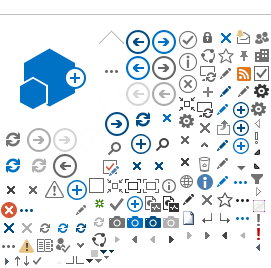
Artist's impression of the Solar Orbiter spacecraft. Credit: ESA
An extremely complex scientific laboratory, Solar Orbiter carries 10 scientific instruments designed to tackle some of the biggest questions about our home star and its influence on our solar system.
Of these instruments, the Spectral Investigation of the Coronal Environment (SPICE) was developed by an international consortium led by STFC RAL Space and is now operated by RAL Space experts in collaboration with partners across Europe and the US.
Dr Andrzej Fludra (SPICE Co-PI), who provides RAL Space scientific leadership on the project, reflects on the journey so far:
“These past years have been intense but incredibly rewarding for the team. After successfully commissioning SPICE during the COVID-19 pandemic and conducting engineering and calibration tests during the spacecraft's 18-month cruise phase, we were thrilled to see the first images in 2020. Since science operations began in 2022, SPICE has been instrumental in answering key questions about the Sun's dynamic processes and atmospheric composition."
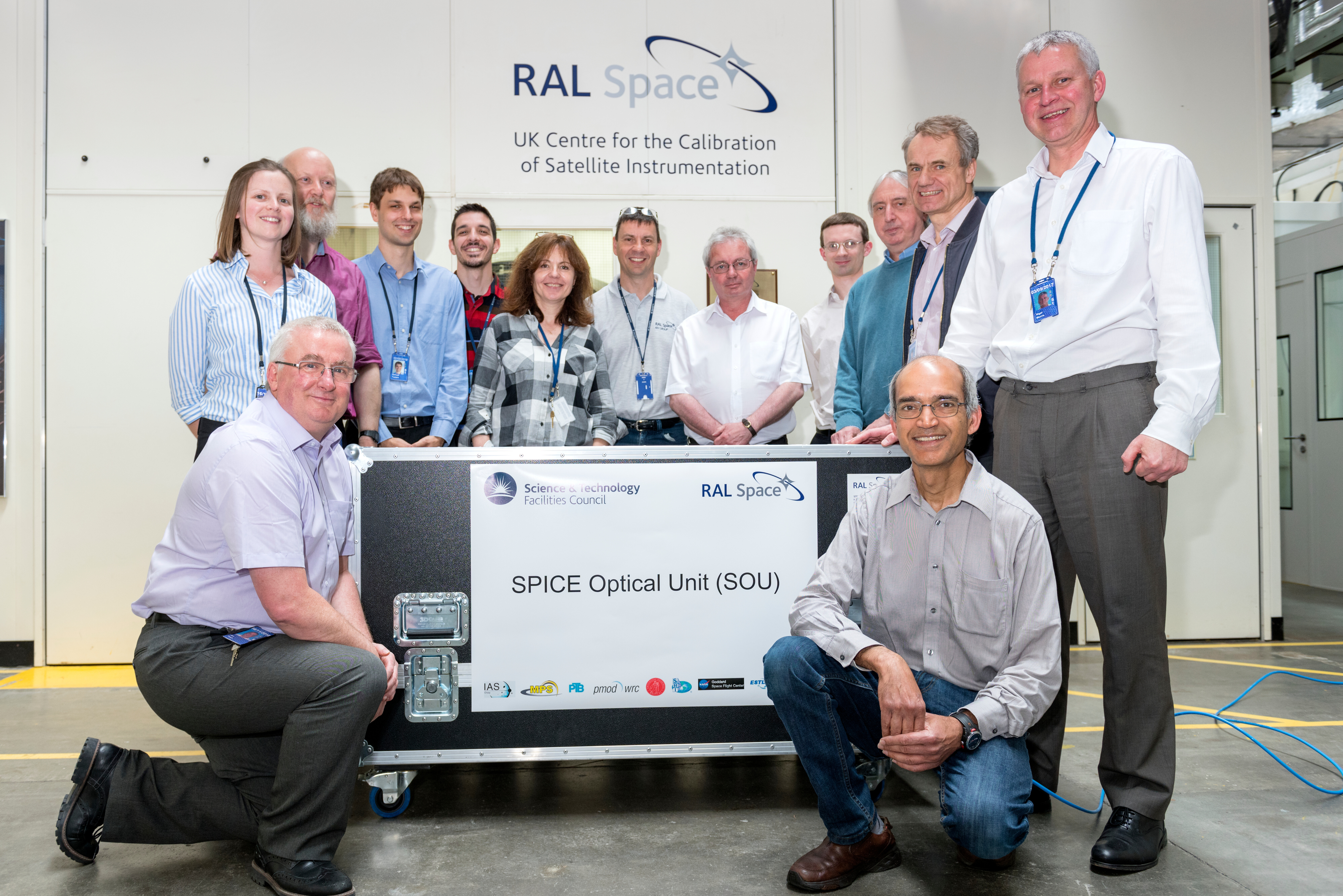
Members of the RAL Space team preparing to deliver the SPICE optical unit to Airbus in May 2017. Credit: RAL Space
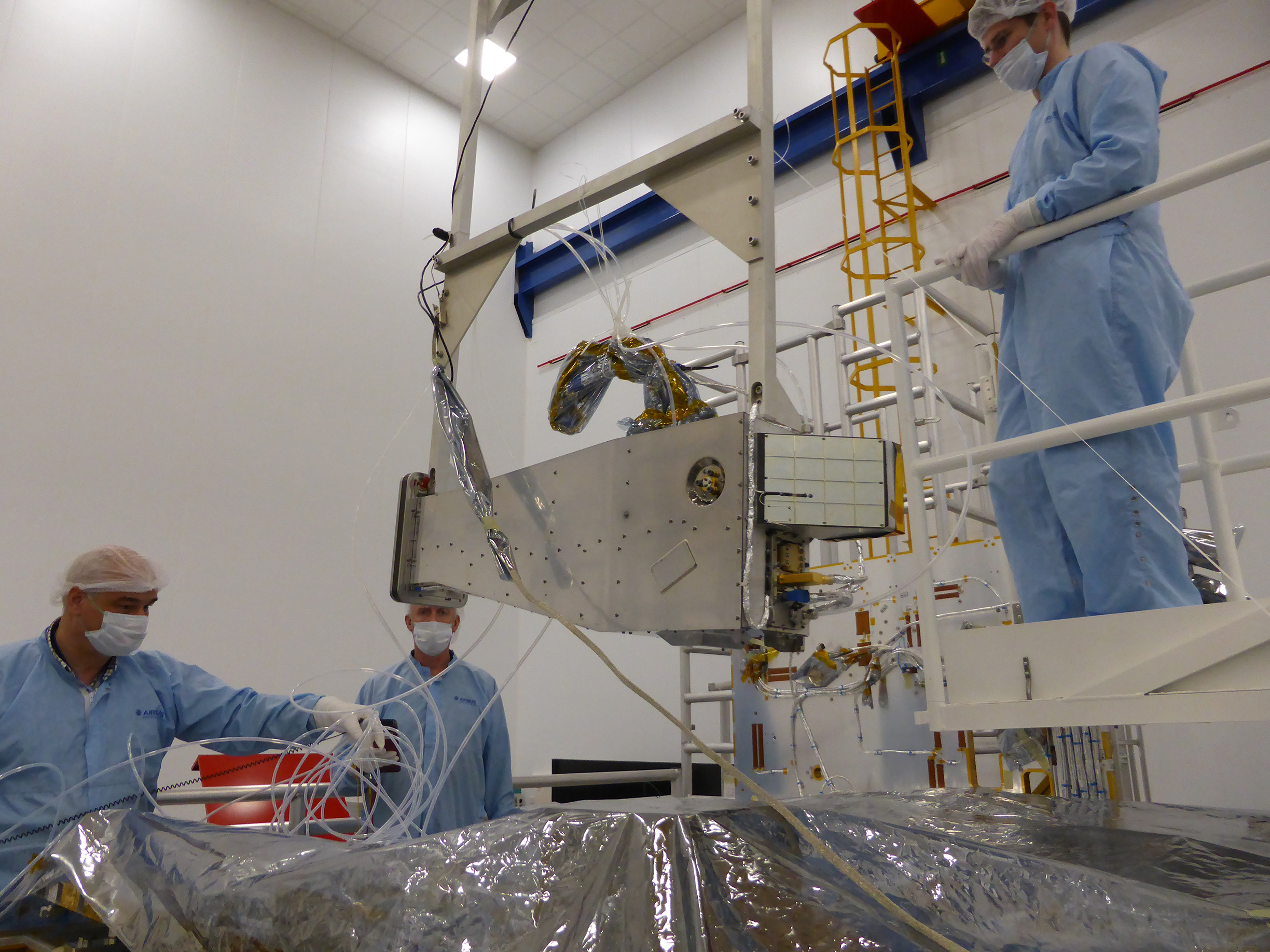
SPICE installation onto the Solar Orbiter spacecraft at Airbus Stevenage in 2017. Credit: RAL Space
Every six months, Solar Orbiter makes its closest approach to the Sun, known as perihelion, bringing it within just one-third of the Earth-Sun distance.
During these periods, all 10 instruments make continuous observations, requiring a coordinated effort among the wider Solar Orbiter science operations team, involving ESA and other instrument teams. Up to three instruments can lock onto the same solar region and select targets together to observe the Sun's most interesting features. These include coronal holes emanating the fast solar wind, active regions displaying dazzling arrays of semi-circular loops arising from complex magnetic fields, sunspots leaking waves into the atmosphere above them, erupting filaments, and huge coronal mass ejections covering a large part of the sky as they expand away from the Sun.
The international Solar Orbiter team meets several times a year to plan upcoming observation campaigns, while the data already acquired is made freely available in the ESA archive, providing a valuable resource for the worldwide solar physics community.
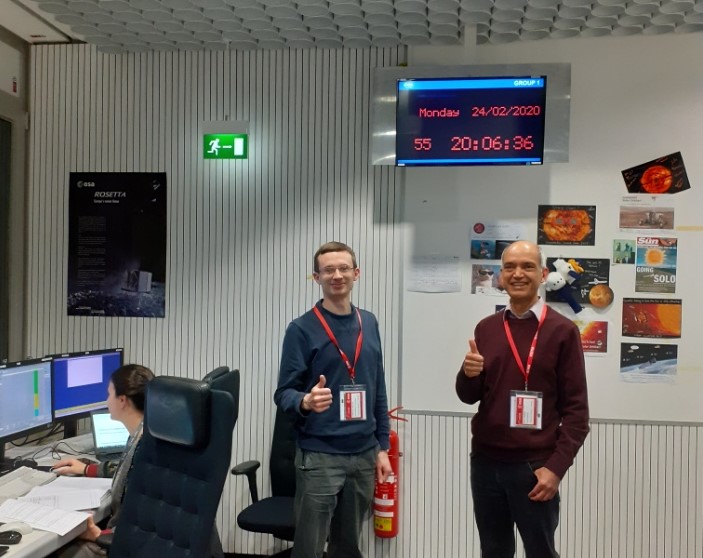
Tim Grundy and Sunil Sidher from RAL Space in the Solar Orbiter control room at ESOC (Darmstadt), taken shortly after SPICE was switched on for the first time in space. Credit: RAL Space
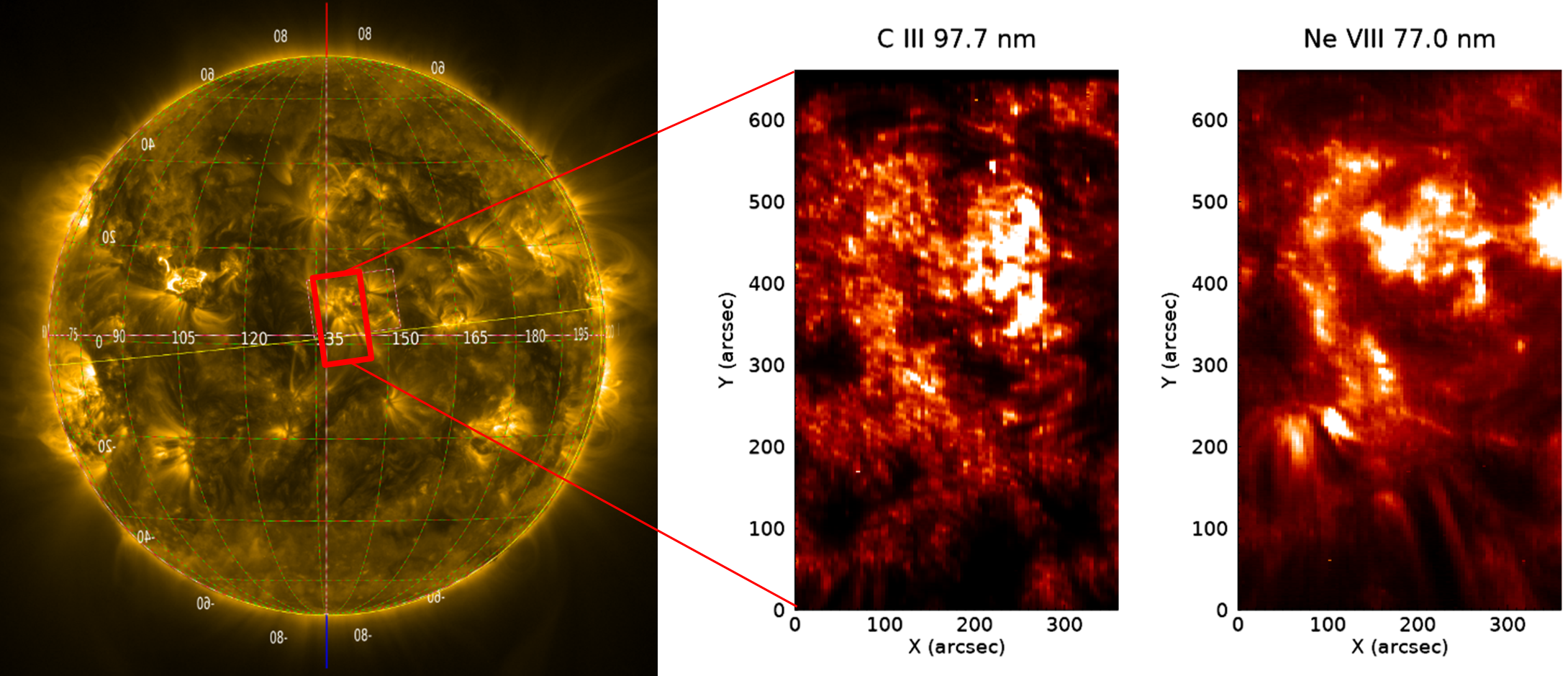
The image shows the full Sun at ~1 million Kelvin imaged by Solar Orbiter EUI/FSI (left panel), and narrow band spectral images from SPICE at two wavelengths for a small active region (middle and right). SPICE as a spectrometer can record a wide range of colours of ultraviolet light corresponding to different chemical elements in the solar atmosphere, at temperatures of ~10,000K to > 1,000,000K. It allows scientists to study the physics of a smaller region of the Sun in detail.
On 18 February 2025, Solar Orbiter will perform its closest-ever flyby of Venus, passing just 371km above the planet's surface. This will be Solar Orbiter's fifth 'gravity assist' manoeuvre, during which the gravitational pull of the planet will tilt the orbit of the spacecraft further out of the ecliptic plane. This will allow the first ever glimpse of the polar regions of the Sun, enabling new landmark science observations to be performed. A further series of gravity assists is planned from 2026 to 2029, which will increase the spacecraft's orbital inclination from 17° to a maximum of around 33°. This will be just in time to study the large polar coronal holes that typically form close to solar minimum.
Supported by the UK Space Agency, the SPICE team at RAL Space remains dedicated to ensuring the continued success of science operations, and will do so up to the anticipated end of the mission in 2030.
